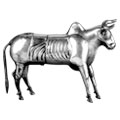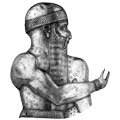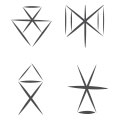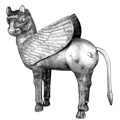Art Robbery in New York
 Click here to download this article.
Click here to download this article.
In December 1984, in order to participate in an art exhibition in New York, Houshang decided to ship some of his finest Achaemenid and Sassanid gold and silver pieces (circa 600 BC–700 AD) from Switzerland to the United States. The total value of the shipment, according to French (commissaire priseur) official experts in ancient art, was estimated at 23 million US dollars. This shipment was insured with Lloyds of London for the same sum.
As soon as the shipment arrived in the customs warehouse in New York City, the entire art collection was stolen in a planned robbery. What was surprising was that the NY police department, despite being aware of the detailed plan of the robbers, not only did not prevent the theft but actually had all the security alarm system of the customs building turned off during the hours when the robbery was under way thus providing easy access and escape for the culprits. Later, the NY police claimed that their action was a ploy to catch the thieves red-handed!
The arrest of the robbers and the recovery of the entire art collection within an hour of the robbery, the parading of these ancient, valuable and unique items on international TV and press reports the following morning (New Year’s Day 1986) provided excellent publicity for the New York police force following public criticism of their inability to cope with the high levels of theft in the city. However, the NY police did not immediately return the recovered collection to Houshang. On the contrary, they made various excuses to keep the entire collection for a considerable period of time and Houshang had no option other than to take legal action to have his property returned to him.
At the start of Mahboubian’s legal case, the Prosecutor at the Supreme Court, Cyrus Vance Jr - relying on a letter, as evidence, received from someone who later became revealed as a fraudster ex-manager of the Mahboubian Gallery in London - fabricated his own baseless theory that Mahboubian’s motivation in transporting his collections to New York was to defraud Lloyds of London by claiming insurance damages. Vance’s intention was to make ungrounded accusations in order to confiscate Mahboubian’s valuable collection for the benefit of New York City and its police organisation. The truth of the matter is that Houshang had at no time requested a claims application from his insurers, Lloyds of London. More importantly, Lloyds of London never accused Houshang Mahboubian in this matter.
Despite the above facts, Cyrus Vance Jr, taking advantage of an extreme anti-Iranian atmosphere (due to the Iranian diplomatic hostage crisis), as well as his father’s presence (Cyrus Vance Sr - US Foreign Affairs Secretary) at the court hearings, succeeded in persuading the jury to rule in his favour and against Mahboubian. The jury found Mahboubian guilty and his valuable collection was confiscated. Many people at the court believed that the presence of the US Foreign Affairs Secretary in a criminal court was unprecedented in US legal history. His presence was viewed as support for his son, but also as an opportunity to participate in a case against an Iranian, following the painful memory of the hostage affair. The invasion of the US embassy building in Tehran and the hostage-taking of the fifty-two US diplomats by the leftist Islamic revolutionaries, on 4th November 1979, as well as Jimmy Carter’s inability to release those hostages were the causes of Carter’s downfall in the US presidential re-elections.
After Houshang Mahboubian appealed against the verdict of the Supreme Court, the case was referred to the Court of Appeal. On 15th June 1989, following a careful study of the case, the panel of judges considered the verdict of the Supreme Court as void, and by certificate No 5579 the Honourable Judge Rena K Uviller confirmed the case as unconditional discharge. Houshang Mahboubian’s case was therefore dismissed. The confiscated collection was then returned to Mahboubian. A part of the same collection then went on to be exhibited in the Metropolitan Museum of New York for about two years, after which it continued on its journey to another exhibition in Japan.





